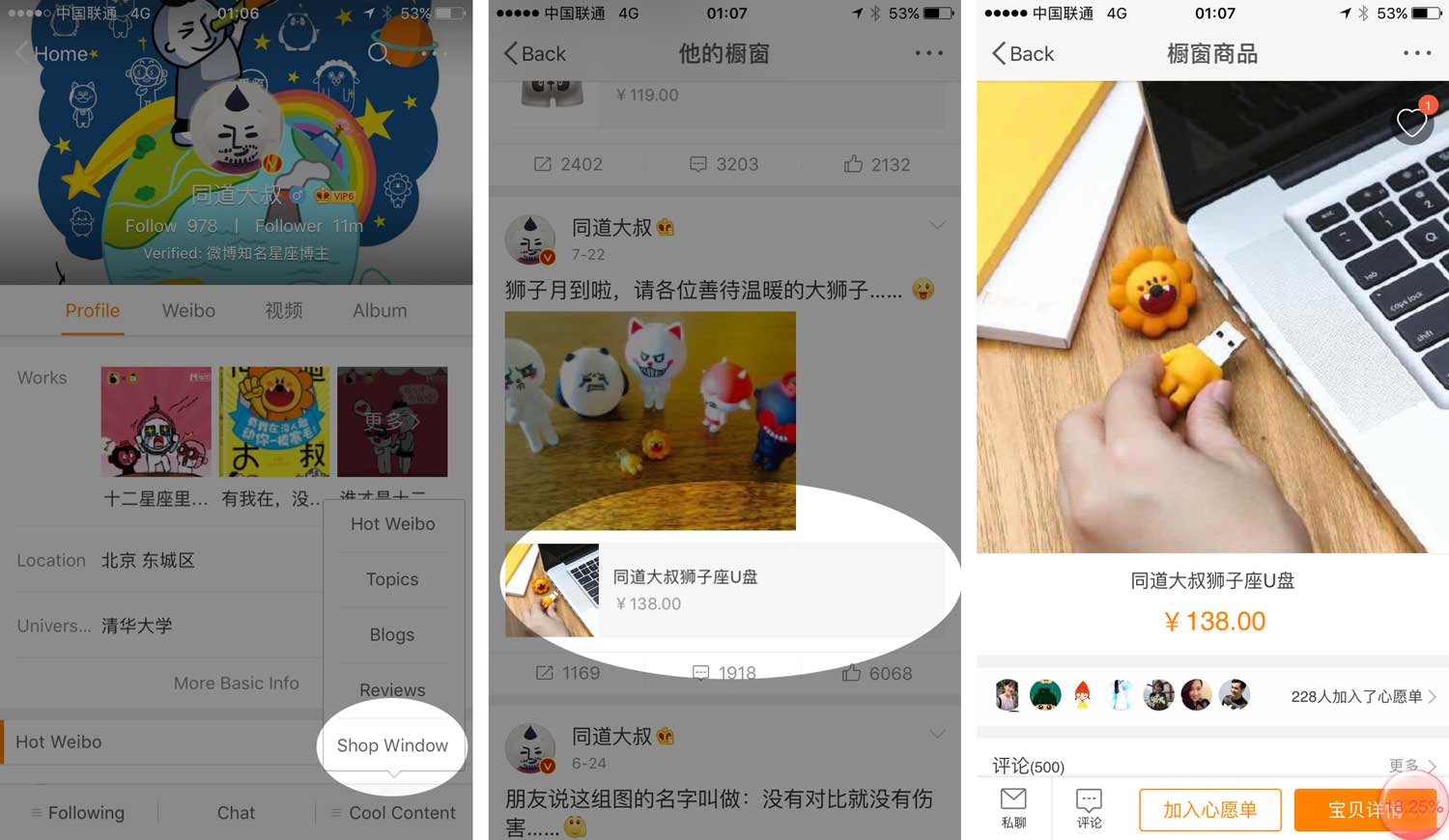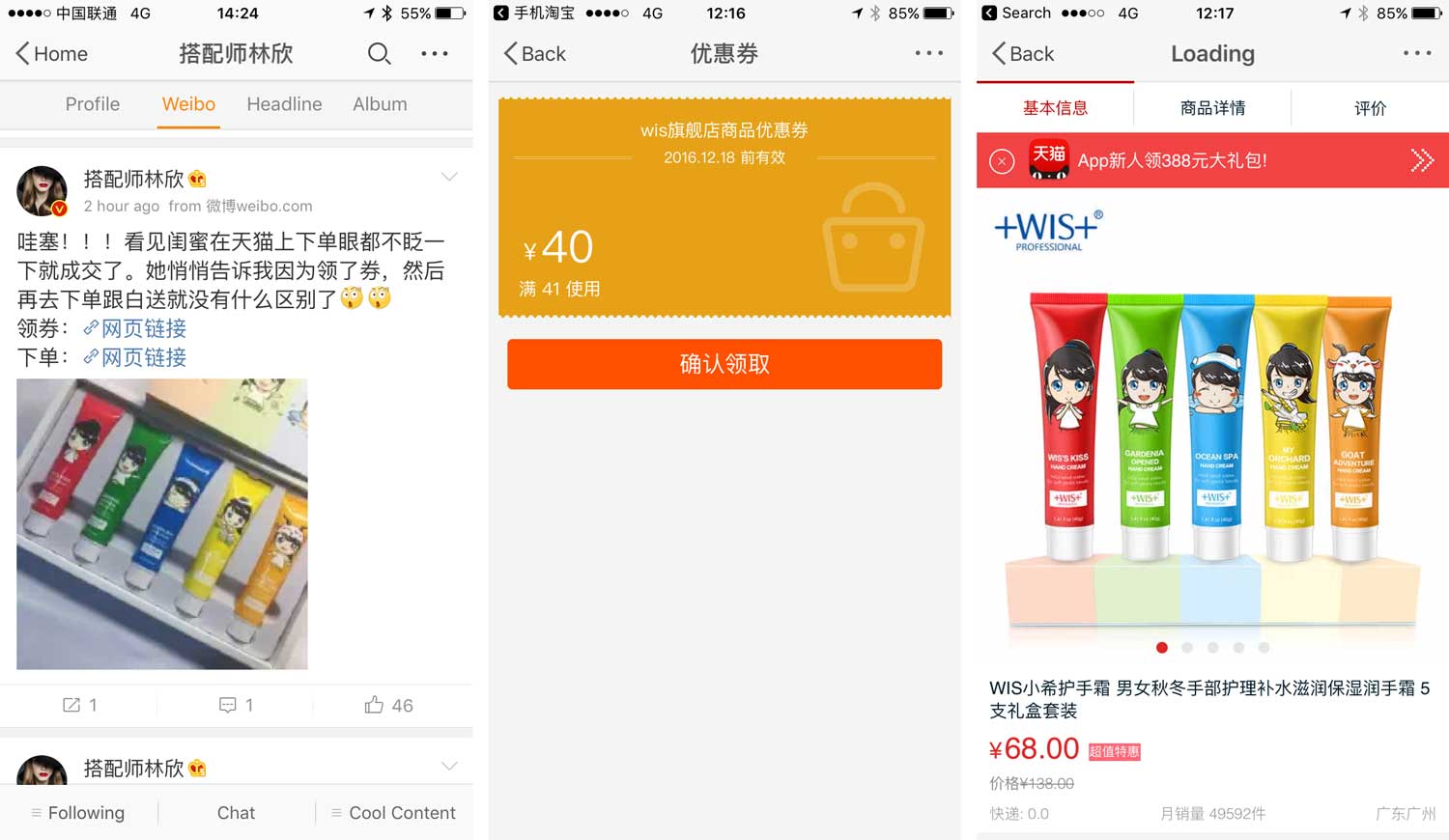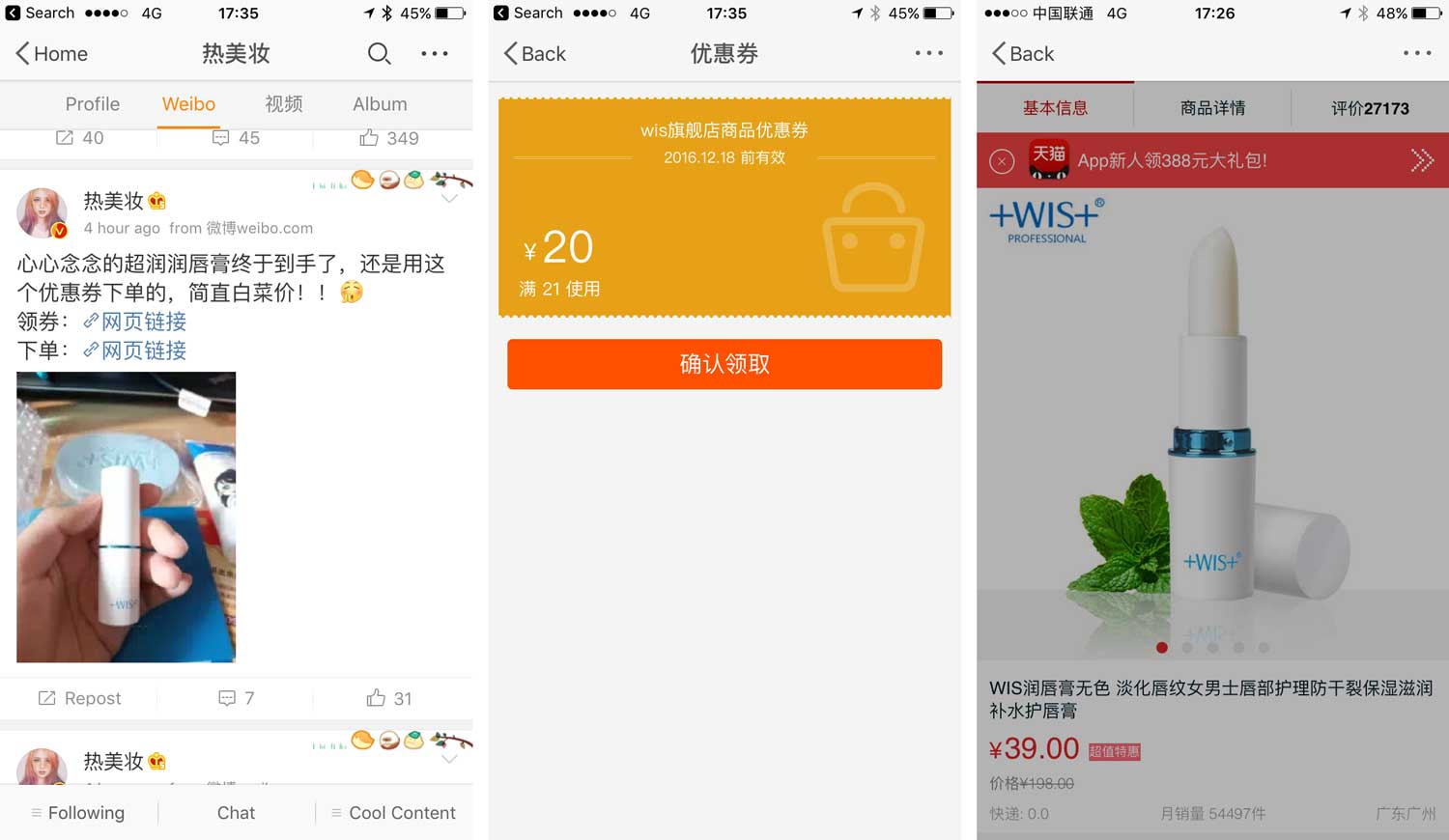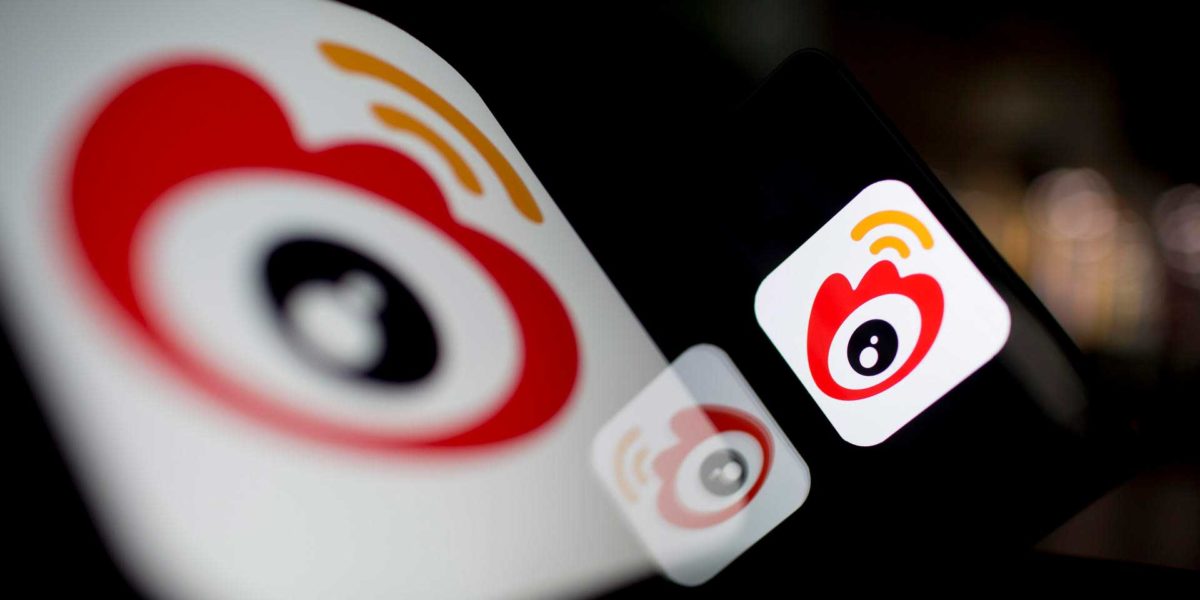Weibo is dead? That’s the most common misconception in social media in China. Weibo has been showing very healthy signs of growth as of Q3 2016: MAU grew 34% year-over-year!
So, who are the largest accounts on Weibo, and how did they do it? Let’s have a look!
Weibo as an e-commerce platform
Everyone heard about WeChat Pay, WeChat shops and WeChat e-commerce.
But have you heard of Weibo shops?
We wrote last week about Uncle Tongdao, and a look at their Weibo account may seem familiar to you… it looks like a WeChat account connected to a WeChat shop

These shops are completely native to Weibo. How do they work? Very simple: they “deep link” to the Taobao APP (which means that clicking somewhere on Weibo opens the Taobao APP at a specific location)
This is not the only way Weibo enables to connect with Taobao. Other KOLs use more low-tech but extremely efficient solutions in order to take their followers to e-commerce:
- Users link to get a Taobao discount (usually from a large brand)
- They then another link to access the discounted product
- The Weibo account either runs the Taobao / Tmall account or (most of the time) gets a commission off the sale
Why is Weibo so connected with Taobao?
Some might be surprised by this tight interconnection between Weibo and Taobao. It is in fact extremely natural as Alibaba owns a 20% stake in Weibo.
There were in fact rumors early this year that Alibaba would expand its stake in Weibo, which caused a surge in Weibo’s stock price. Given Weibo’s outstanding Q3 performances, such a move might very well still be on the table.
Which KOL use Taobao for monetization?
Taobao sales look like a promising way for KOL to get money… but given the lucrative business of ads, is it a prefered approach for monetization?
It clearly is. By looking at the official Weibo ranking of top KOL on the platform, we can observe that the number 1 KOL in both fashion and cosmetic space are both using this tactic. Their names are Linxin Design and Hot Cosmetics.
Let’s have a closer look at these two examples.
Linxin Design (搭配师林欣)
Followers: 6,009,640
# of posts: 49,050
Started in: 2011-07-06
Linxin Design is a typical fashion KOL: posting articles featuring clothes, beauty products and makeup tutorials.
The account is extremely active, pushing about 50 posts per day and monetizing via ads and Taobao integration.
Linxin design is using exactly the strategy highlighted above, offering a pair of links together with product promotion: the first link offers a discount, while the second takes the user to a product on Tmall.

Hot Cosmetics (热美妆)
Followers: 2,072,792
# of posts: 71,228
Started in: 2011-12-13
The account posts a wide range of content from maketup tutorial to content related to food, drawing, news and beauty in a very broad sense.
A large amount of content is also localized content from Japan and Korea (videos subtitled in Chinese).
The monetization method is similar to Linxin Design: coupon-driven sales. The same brands (in this case, WIS) actually promote on both accounts, showing that large cosmetic brands are heavily investing in these sales channels

Conclusion
It has been years that Weibo has been discounted as a dying social network, despite strong growth metrics. Although it is clear Weibo is not what it used to be (especially in terms of time spent daily on the APP), it remains a strong contender for social e-commerce.
With more affordable CPC ads and a better media support for video content, Weibo has true assets to stand out as a weapon of choice for e-commerce and marketers in China.

